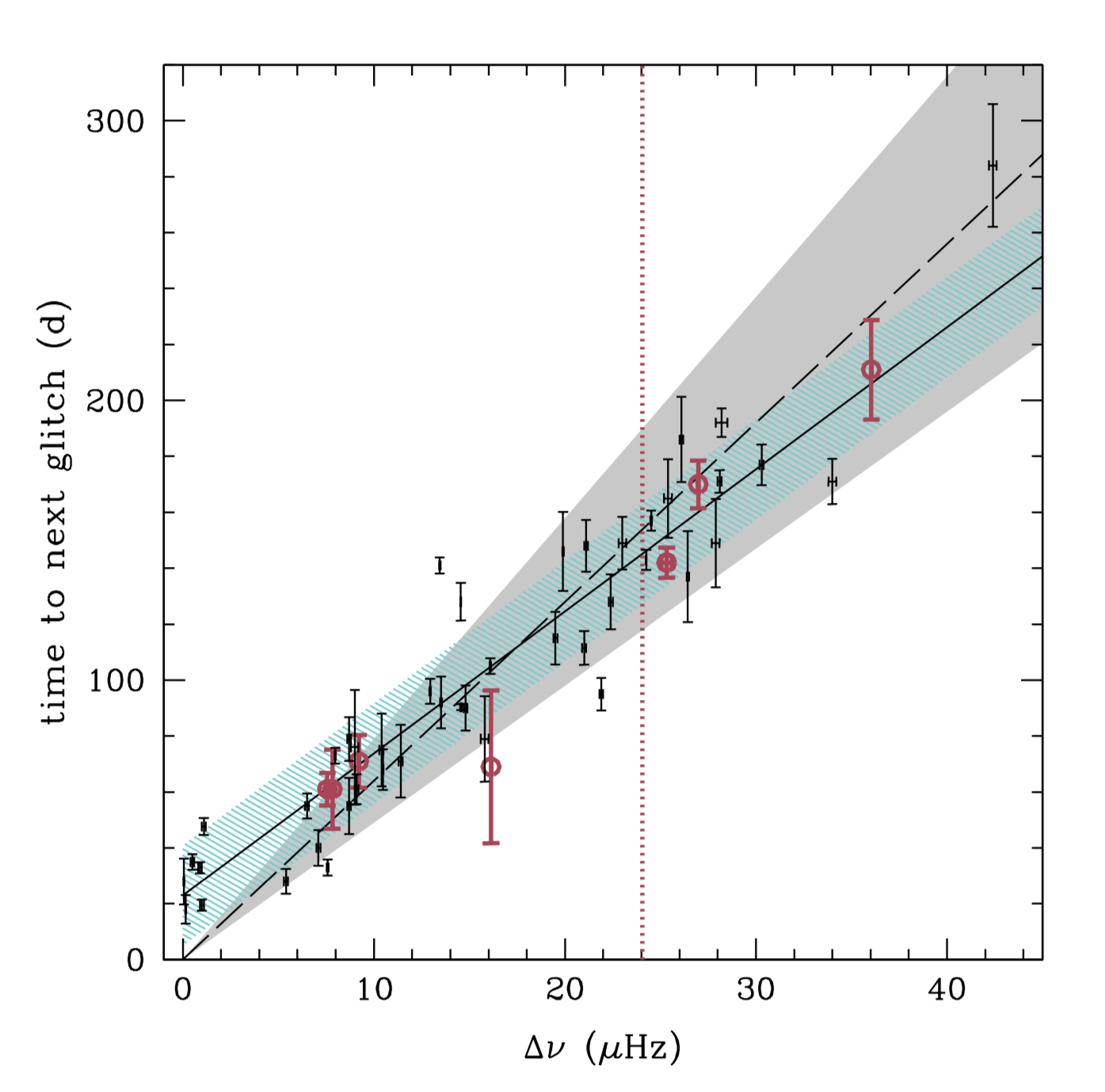NICER / ISS Science Nugget
for August 27, 2020
Return of the Big Glitcher: NICER timing and glitches of PSR J0537-6910
Spinning at approximately 62 revolutions per second, PSR J0537-6910 is the fastest-rotating young pulsar known. It is located in the few-thousand year-old supernova remnant N157B in the Large Magellanic Cloud. The star's spin-induced pulsations are only seen in X-rays, and J0537 has the highest spin-down energy loss rate among more than 2800 known pulsars. While the pulsar's spin gradually slows with time, it also undergoes sudden spin-up "glitches" (Figure 1), on average at a rate of > 3 per year, with glitch sizes larger than those seen in most glitching pulsars. Because of its high glitch activity, PSR J0537-6910 proves to be extremely useful in theoretical understanding of the mechanism that produces glitches, thought to be due to unpinning of superfluid vortices in the star's interior.
NICER has been observing J0537 since the start of science operations in July 2017. Recently accepted for peer-reviewed publication, a paper led by Dr. Wynn Ho (Haverford College) describes 2.7 years of NICER data on the pulsar's timing behavior, including 8 new glitches that extend and improve upon data provided by NICER's predecessor mission, NASA's Rossi X-ray Timing Explorer (RXTE). The new glitches follow the correlation, unique to J0537 and discovered by RXTE, between the glitch size and the time until the next glitch (Figure 2). Thanks to this correlation, the times of future glitches are now predictable to within a few days, enabling closer monitoring to catch a glitch "in the act."
J0537 is of additional interest because of its potential as a source of detectable gravitational waves (GWs). The frequencies of such GWs are in the most sensitive band, around 100 Hz, of ground-based detectors such as the Laser Interferometer Gravitational-wave Observatory (LIGO). The most sensitive searches for GW emission from known pulsars rely on contemporaneous X-ray observations to track a pulsar's spin evolution, thereby reducing the large parameter space of a search. Such a targeted search has not been done in the advanced-LIGO era for J0537, because of the lack of a timing model to compare to GW data, and an accurate phase-connected model is not possible over long times without monitoring because of the pulsar's high glitch rate. The new NICER results provide the necessary timing model and enable the LIGO team to now perform a sensitive search for GWs from pulsar J0537.

Figure 1: Difference between the measured spin frequency of PSR J0537-6910 and a linear model for frequency evolution relative to segment 4. Segments are separated and numbered by the occurrence of a spin-up glitch, each of which is denoted by a vertical dashed line.

Figure 2: Time to next glitch as a function of glitch size Δ&.nu; Circles with error-bars are NICER values, and points with error-bars are RXTE values. The vertical dotted line indicates the size of glitch 8, which is the most recent NICER-detected glitch and for which the time to next glitch is not known yet. Solid and dashed lines show a linear fits to the NICER and RXTE data, while shading shows correlation regions which fit 68 percent of glitches.
<< Previous
Main Index
Next >>